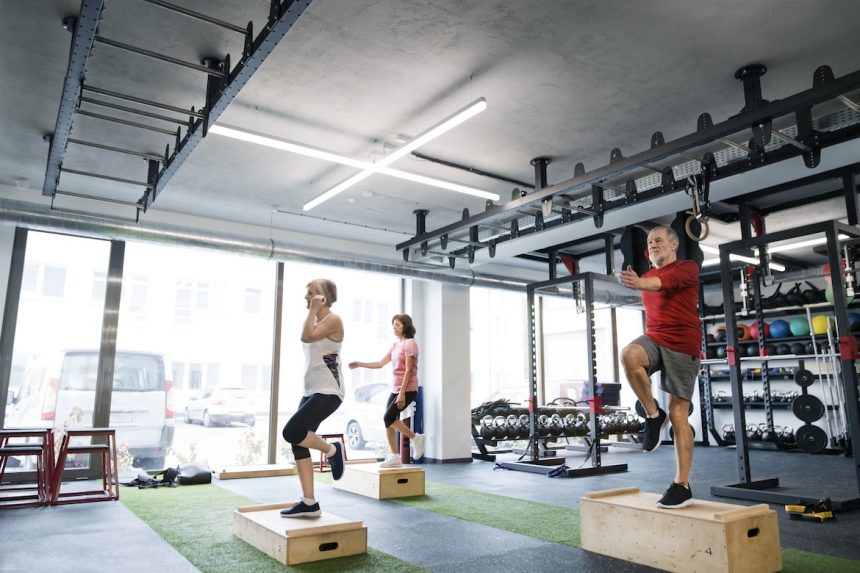When it comes to functional strength training, incorporating exercises that mimic real-life movements is key. Step-ups are a perfect example of this, as they simulate activities like walking up stairs or stepping into a car. Researchers even use step-ups to assess leg muscle strength and function in older adults.
To perform a step-up correctly, stand facing a sturdy plyo box, bench, or step that’s about knee height. Lift your right foot and place it on top of the box, ensuring it’s a few inches away from the edge and your toes are pointing forward. Press your weight into your right foot to straighten your leg and stand on top of the box, while driving your left knee up to hip height. Lower your left foot back to the floor, then step your right foot down. Repeat on both sides for 12-15 reps.
Step-ups primarily target your glutes and quads, with additional engagement from your hamstrings, hip abductors/adductors, calves, lower abs, and pelvic floor. Varying the height of the step can alter muscle activation levels.
Benefits of step-ups include stronger glutes, improved stability and coordination, enhanced sports performance, addressing muscle imbalances, and improved cardiovascular fitness. Step-up variations like the up-up-down-down step-up and weighted step-up can add challenge and diversity to your routine.
Incorporating step-ups into your fitness regimen can benefit individuals of all fitness levels and goals, from elite athletes to older adults looking to maintain mobility. By starting with proper form and gradually increasing difficulty, you can experience the numerous advantages of this functional exercise.






